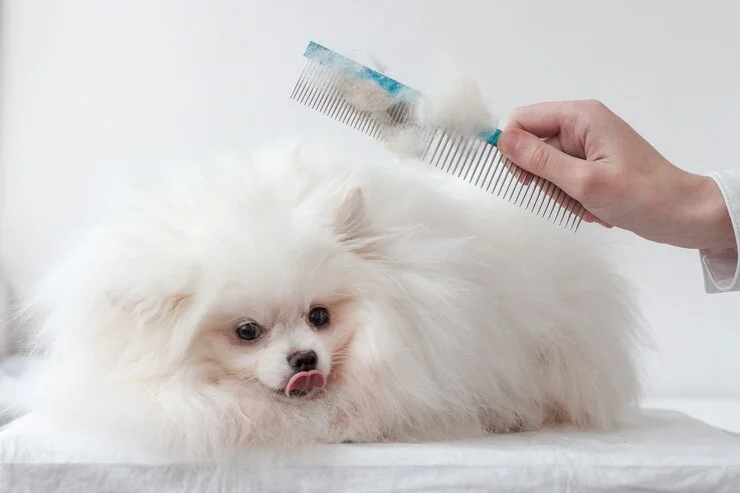-
Kutchina service center, Kolkata - 700010
Kutchina service center, Kolkata - 700010

Hair Loss in Dogs can signal deeper health issues. Learn key causes, treatments, and care tips from insights backed by a reputed pet clinic.
Hair loss in dogs is more than just a cosmetic issue—it can be a visible sign of an underlying health concern. Known medically as alopecia, it can affect any breed, age, or gender, and often shows up as bald spots, thinning fur, patchy coats, or excessive shedding.
As a pet parent, noticing fur clumps around your home or bare spots on your dog’s coat can be worrying. But with the right knowledge and timely care, most causes of hair loss are manageable—and even preventable.
Let’s walk through the common causes, practical treatments, and ways to keep your pup healthy and happy.

Hair loss in dogs can occur gradually or suddenly. Sometimes it’s seasonal shedding; other times, it signals allergies, infections, or hormonal imbalances.
Ignoring the symptoms may lead to:
Being attentive to early signs can make a big difference in both your dog’s comfort and long-term wellness.
Let’s break down the most common culprits—some more obvious, others easily overlooked.
Dogs can be allergic to:
Allergic reactions often lead to itching, inflammation, and localized bald spots.
These conditions usually come with red, flaky, or scabby skin.
Hair loss in dogs can also stem from internal issues like:
Look for other signs like weight changes, lethargy, or behavioral shifts.
A diet lacking essential nutrients can lead to dry, brittle hair and shedding. Dogs need:
Low-quality food or sudden dietary changes can trigger hair loss.
Sometimes, hair loss isn’t physical but psychological. Dogs under stress or boredom may:
Environmental enrichment and regular exercise help in such cases.

If you spot unusual hair loss in dogs, here’s what to observe:
Keeping track of these clues helps your veterinarian determine whether it’s dermatological, hormonal, or behavioral.
Once the cause is identified, treatment can begin—often with great results. Here’s how professionals typically manage it:
Prevention is always better than treatment. Here’s how to support your dog’s coat health year-round:

Q1. Is some hair loss in dogs normal?
Yes, seasonal shedding is normal in many breeds. However, sudden or patchy hair loss may signal a deeper issue.
Q2. Can poor grooming cause hair loss?
Yes. Infrequent brushing or harsh grooming products can damage the coat and irritate the skin.
Q3. Should I worry if my puppy is losing fur?
Mild shedding is okay, but bald patches, redness, or excessive itching in puppies warrant a vet visit.
Q4. Can stress cause hair loss in dogs?
Definitely. Behavioral alopecia is real—often triggered by major changes, loneliness, or boredom.
Q5. How long does it take for hair to grow back?
It varies depending on the cause. Mild cases may recover in a few weeks; chronic conditions may take months of consistent care.
Hair loss in dogs can be distressing—but it’s also a valuable signal. From allergies and infections to stress and nutrition, the causes are many, but they’re not impossible to manage.
The key is early observation, timely veterinary consultation, and consistent care. Whether it’s switching diets, using medicated shampoos, or addressing deeper hormonal imbalances, taking proactive steps helps your dog recover faster and stay healthier long term.
Remember, your pet’s skin and coat are windows into their overall health. Trust your instincts, stay informed, and when in doubt, always consult trained professionals.